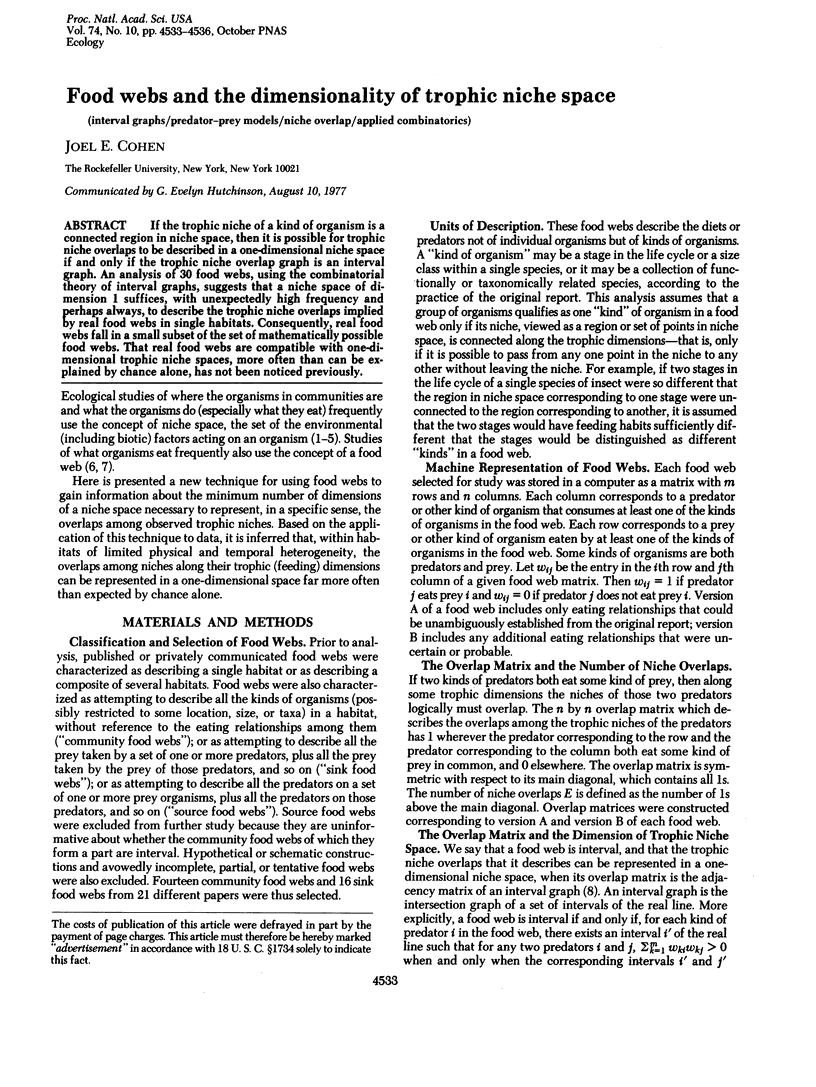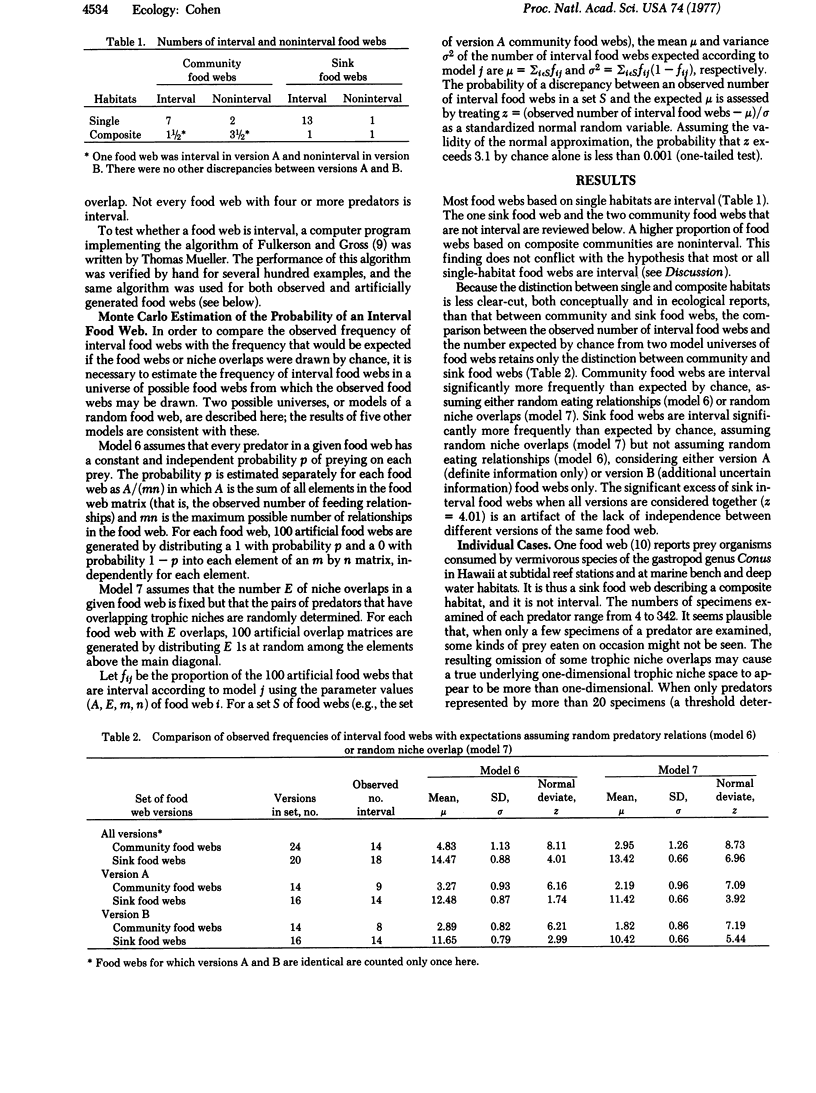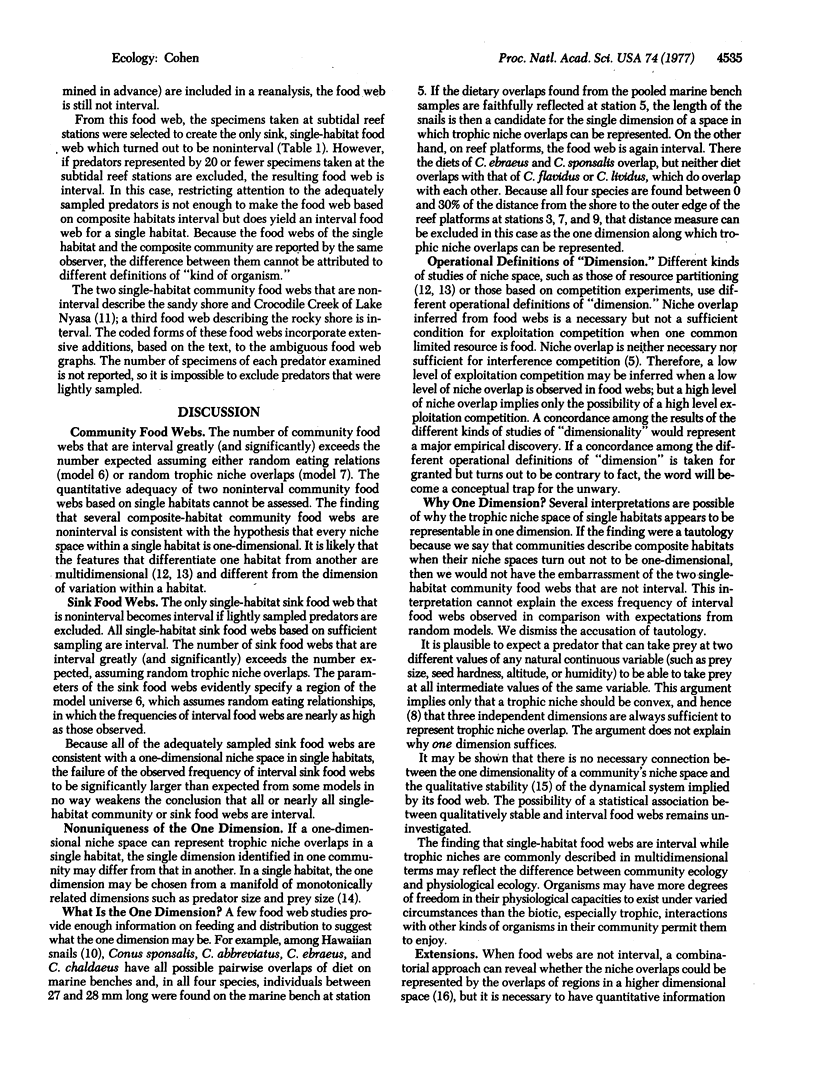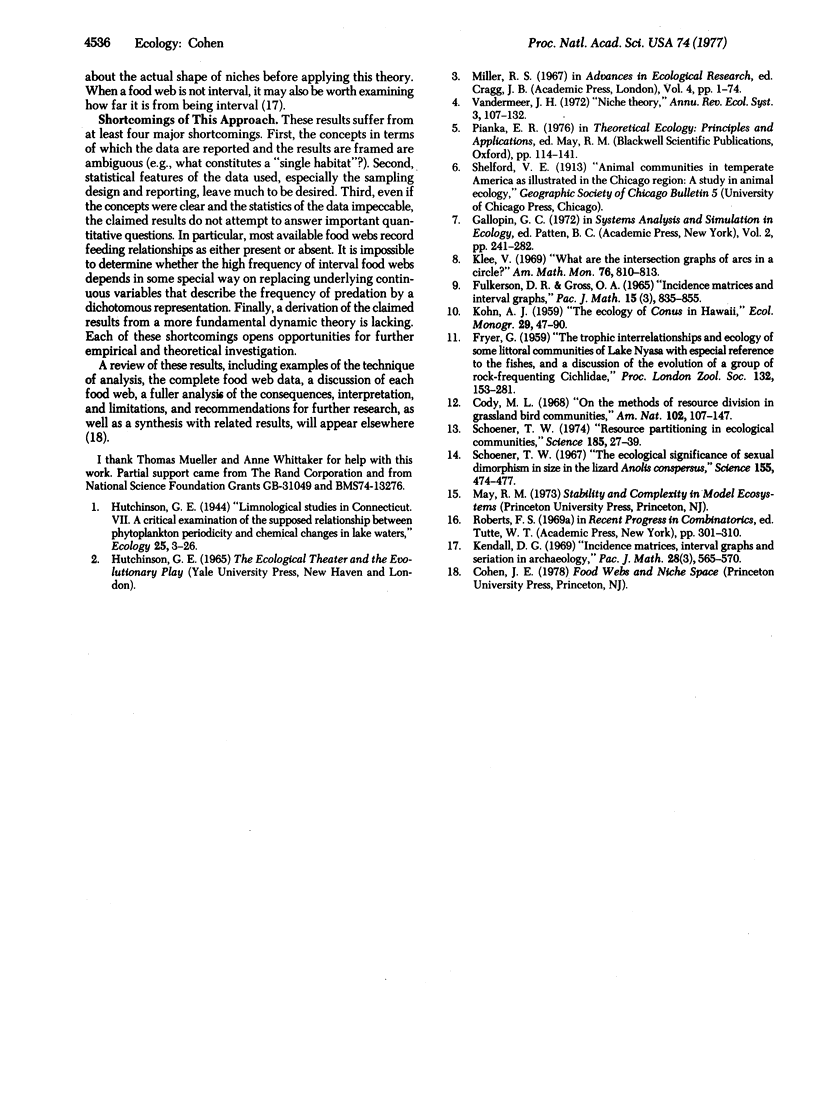Abstract
If the trophic niche of a kind of organism is a connected region in niche space, then it is possible for trophic niche overlaps to be described in a one-dimensional niche space if and only if the trophic niche overlap graph is an interval graph. An analysis of 30 food webs, using the combinatorial theory of interval graphs, suggests that a niche space of dimension 1 suffices, with unexpectedly high frequency and perhaps always, to describe the trophic niche overlaps implied by real food webs in single habitats. Consequently, real food webs fall in a small subset of the set of mathematically possible food webs. That real food webs are compatible with one-dimensional trophic niche spaces, more often than can be explained by chance alone, has not been noticed previously.
Keywords: interval graphs, predator-prey models, niche overlap, applied combinatories
Full text
PDF



Selected References
These references are in PubMed. This may not be the complete list of references from this article.
- Schoener T. W. Resource partitioning in ecological communities. Science. 1974 Jul 5;185(4145):27–39. doi: 10.1126/science.185.4145.27. [DOI] [PubMed] [Google Scholar]
- Schoener T. W. The Ecological Significance of Sexual Dimorphism in Size in the Lizard Anolis conspersus. Science. 1967 Jan 27;155(3761):474–477. doi: 10.1126/science.155.3761.474. [DOI] [PubMed] [Google Scholar]


